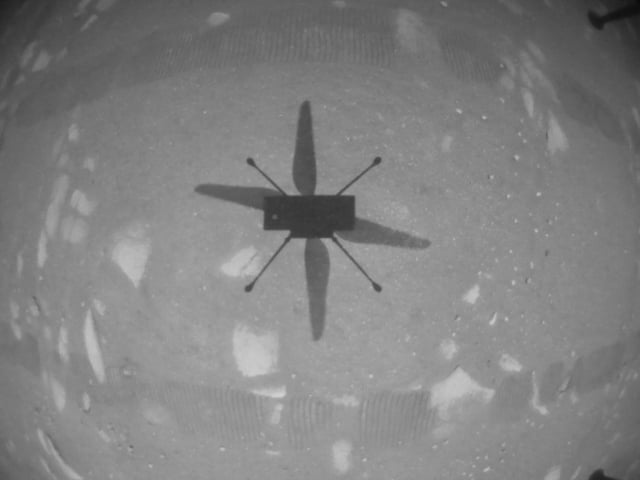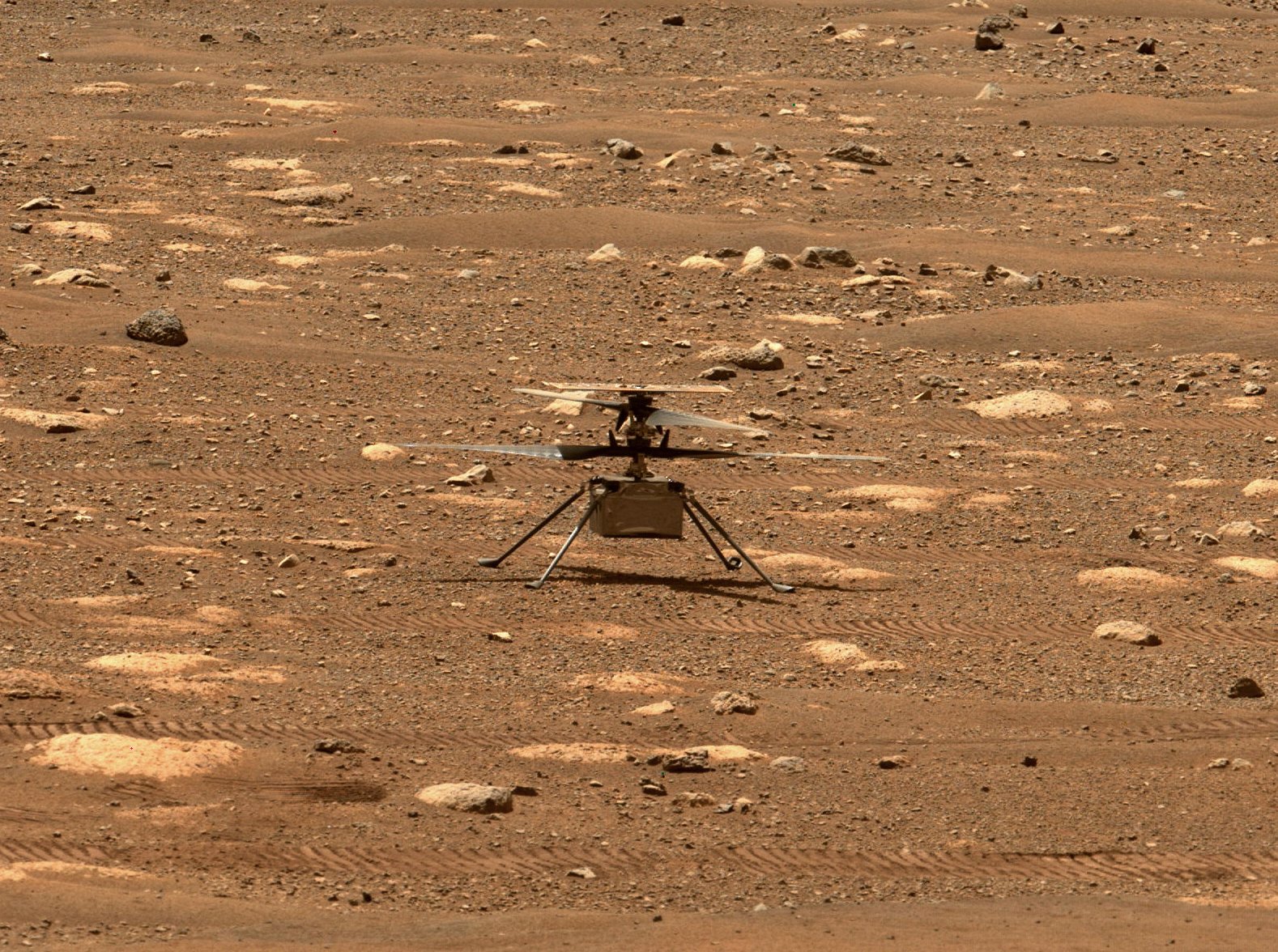NASA Just Flew a Drone on Mars – Here is its First Photo
![]()
NASA’s Ingenuity drone, which was transported to the Martian surface attached to the Perseverance Rover, has successfully taken flight and sent back its first photos while airborne. It is the first successful flight of a controlled, powered aircraft on another planet.
“We can now say that human beings have flown a rotorcraft on another planet,” said MiMi Aung, project manager for Ingenuity at Nasa’s Jet Propulsion Laboratory (JPL) in Pasadena, California.
“We’ve been talking for so long about our ‘Wright Brothers moment’ on Mars, and here it is.”
![]()
The video above shows Ingenuity’s carbon fiber blades as captured by the Mastcam-Z camera of the Perseverance Mars rover.
As reported by the BBC, confirmation of the drone’s successful flight was transmitted via satellite which is orbiting Mars and relayed back to Earth.

The black-and-white image above is the first sent back to Earth from Ingenuity and was captured with its navigation camera, which only takes lower-resolution black and white images. Additional color images taken from the drone are expected in the coming days.
The solar-powered helicopter first became airborne at 3:34 a.m. EDT (12:34 a.m. PDT) — 12:33 Local Mean Solar Time (Mars time). This time was determined by the Ingenuity team as having the optimal energy and flight conditions for success. NASA writes that altimeter data indicates Ingenuity climbed to its prescribed maximum altitude of 10 feet (3 meters) and maintained a stable hover for 30 seconds. It then descended, touching back down on the surface of Mars after logging a total of 39.1 seconds of flight.
You wouldn’t believe what I just saw.
More images and video to come…#MarsHelicopterhttps://t.co/PLapgbHeZU pic.twitter.com/mbiOGx4tJZ
— NASA's Perseverance Mars Rover (@NASAPersevere) April 19, 2021
Though the first flight of Ingenuity only lasted only seconds and the flight was not particularly high by Earth standards, the monumental achievement of flying a powered aircraft on another planet — especially one with as thin of air and atmosphere as Mars — cannot be understated.
The Red Planet has a significantly lower gravity – one-third that of Earth’s – and an extremely thin atmosphere with only 1% the pressure at the surface compared to our planet.

“This means there are relatively few air molecules with which Ingenuity’s two 4-foot-wide (1.2-meter-wide) rotor blades can interact to achieve flight,” NASA writes. “The helicopter contains unique components, as well as off-the-shelf commercial parts — many from the smartphone industry — that were tested in deep space for the first time with this mission.”
Fortune favors the bold. (But we still have a back-up plan.) #MarsHelicopter project manager MiMi Aung explains why the team is optimistic about the first flight attempt on Monday: https://t.co/cwCEcDvoQZ pic.twitter.com/CR4jQBGr2M
— NASA JPL (@NASAJPL) April 18, 2021
NASA is expected to ask the drone to take part in more “adventurous” flights in the days ahead where it will be commanded to fly higher and farther as the engineers seek to test the limits of the technology.
“Ingenuity is the latest in a long and storied tradition of NASA projects achieving a space exploration goal once thought impossible,” said acting NASA Administrator Steve Jurczyk. “The X-15 was a pathfinder for the space shuttle. Mars Pathfinder and its Sojourner rover did the same for three generations of Mars rovers. We don’t know exactly where Ingenuity will lead us, but today’s results indicate the sky — at least on Mars — may not be the limit.”
NASA says that the 19.3-inch-tall (49-centimeter-tall) Ingenuity Mars Helicopter contains no science instruments inside its tissue-box-size fuselage. Instead, NASA says that the 4-pound (1.8-kg) rotorcraft is intended to demonstrate whether future exploration of the Red Planet could include an aerial perspective.
Image credits: NASA/JPL-Caltech